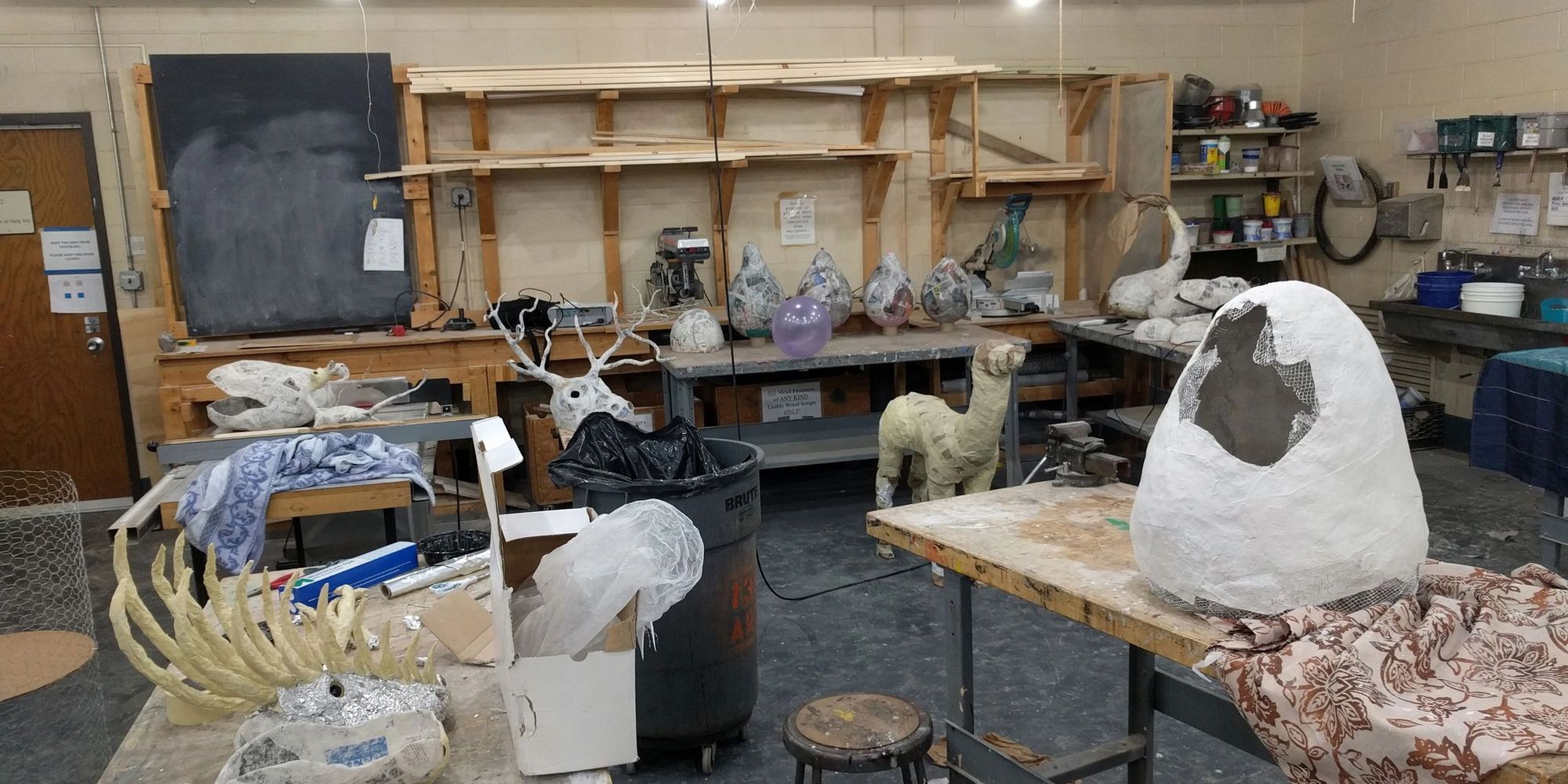005
"If we are to change so much, we're going to need everybody involved. The challenge for arts and culture is about how do we create possibilities for people to participate?"

Viaduct Arts is a newsletter about art that engages the climate crisis, explores our relationship to nature, and reimagines the future.
Reading these on your phone? Click 'view online' on a computer for a more visually impactful experience and to browse past newsletters.
Don't forget to follow Weather Report on Instagram @viaductarts!
WEATHER REPORT
artist dispatches on the weather, environment, and everyday life

Washington DC, USA - Rich Riggins
A post-apocalyptic morning in DC or just pretty darn cold? Funny how such warm colors can look so cold.
I was headed north on the George Washington Parkway to a vehicle overlook above the Potomac and with a view of downtown DC. The monument is 4.25 miles from my vantage point. At this distance the angles come together at the end of January and allow me to make a photo as the sun rises behind the monument. I noticed the "clouds" forming from the vents in the city. I waited until the sun was out of the frame and then shot the steam trails. It was a crazy cold morning and the sunrises always have a life of their own.
Where is the steam coming from? I found this article about DC's 'steam tunnels' which was very interesting and really matches with the plumes I shot: https://www.washingtontunnels.com/steam-map

Rich Riggins is a photographer and trapeze instructor in Washington DC (Instagram @richrigginsphotography)
More about Weather Report here
ARTIST FEATURE
new approaches to climate
Kelsey Joyce
These are my collection of imaginary creatures that I call the Imgī. They are friendly creatures that act as guardians and promote happiness. Each Imgī has their own personality and special power.


I took an Intro to Sculpture class my junior year of college. I took an immediate liking to the medium and ability to express and create something physical. My current practice is all about creating and embracing imaginary creatures and environments to help tell stories about topics that I want to address.
The Imgi are imaginary creatures that live on a veil that is parallel to our world. They are able to cross into our world unseen and positively affect our world. The Imgi will reveal themselves to specific people to teach us how to help one another, other living creatures, and our planet. They are an older and more balanced species than humans and all their interactions with us are with the aim to help steer humanity in the right direction.
This project is directed at anyone who likes to use their imagination. Children have amazing imaginations but I want to create something that adults can relate to as well.
As an artist I think about climate change often. Even when I am not consciously creating artwork with climate themes I end up circling back to the theme of taking care of Earth and reducing waste. Bringing in imaginary elements to a very real-world problem helps make it more accessible to all ages and the optimism that we have a chance to change our harmful ways.
I think it is an artist's job to move people, to make them feel. Terrifying climate statistics are sadly not enough. As an artist I am exploring different ways to convince people to care about Earth and a future that they possibly might never see. I have a lot of hope for humanity, especially the young generations that are so passionately fighting for legislation to protect the Earth.

Kelsey Joyce is a sculptor and arts educator in Silver Spring MD, USA (kelseyjoyce.com, Instagram @kelsey_joyce_art)
FUTURE-MUSIC
music to carry us forward
Xiuhtezcatl Martinez (aka X) feat. Jaden Smith
Speaks pretty directly for itself. Songs that speak so directly are uncomfortable for many artists, especially ones who may not want to be branded as activist or preachy. But both of these young guys have embraced being vocal in making a difference with their work. They know the score, and aren't afraid to call it out.
ROUNDUP
Maya Lin’s forest in a Manhattan park makes a point about climate change. Is anyone listening?
Washington Post | July 15, 2021

Pretty dead trees, serving as a backdrop to drinking latte on a nice afternoon.
That isn’t Lin’s fault for crafting a message insufficient to alarm us, nor is it the fault of ordinary people enjoying a few moments outdoors in a peaceful city park. But it does force us to confront the sad fact that we can’t rely on art to change the world at the rate the world needs changing. The crisis has outpaced us.
Perhaps the world will take a turn for the better — we will finally address climate change and bequeath a habitable planet to our children. Looking back from that happy place, “Ghost Forest” may be seen as one of many small prophecies that became a cascade of motivating energy. But more likely, greed and stupidity will prevail, and the history we want to read won’t be written because the scramble for basic survival will overwhelm all other ambitions, including writing history and, ultimately, making art.
Bringing this back from last summer. I have to say, while it's an important read, I disagree (or at least want to disagree) with the premise that art can't do enough at this point. I think that's putting too much pressure on art. It's like the debate about individual actions on climate: "but that will never be enough to save us!". Of course one artwork, even a high-profile work like Ghost Forest (now dismantled and made into boats), doesn't budge the needle on its own, just as one family eating less meat doesn't.

The uncomfortable truth is that we don't know what combination of policy, structural, and individual efforts will help against climate, or if anything will. We need all of it, at scale, sustained indefinitely, with no promise of success.
If everything needs to change, no policy can work without elevating the mindset of people. Which is where art comes in.
Some of our best art has come from our most dire times. Even as things get worse, we will need it more, not less, and in re-invented forms. Certainly bad and trivial art may disappear under societal duress, and art won't stop climate change. But it can help change and redirect us, hopefully in time, and contribute to the resilience we're going to need no matter what.
RESOURCES
Video
If we are to change so much, we're going to need everybody involved in it. And the challenge for activism - and I would argue the challenge for arts and culture - is about how do we create possibilities for people to participate? That means we have to de-intellectualize some of this stuff that we talk about in climate action, we're talking about degrees, parts per million... We have to make the struggle for climate change a human-centric struggle. - Kumi Naidoo
Podcast
Conscient Podcast - Episode 97 with Chantal Chagnon, Kevin Jesuino, Melanie Kloetzel (45:53)
This is my first episode with three guests! Our conversation covered a range of issues, including decolonization and the need for artists concerned about the climate emergency to network and develop solidarity. The trio also explained their collaboration on the climate art web project.
Chantal Chagnon is a Cree Métis singer, drummer, artist, storyteller, actor, educator, workshop facilitator, social justice advocate and activist with roots in Muskeg Lake Cree Nation, Saskatchewan.
Dr. Melanie Kloetzel is a performance maker, scholar and educator who is committed to research that spans stage, site, and screen.
Kevin Jesuino is a Portuguese-Canadian queer multidisciplinary artist, facilitator, teacher, arts producer and community organizer working in performance and socially-engaged art.
